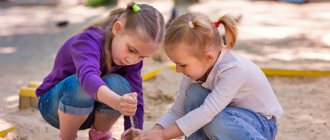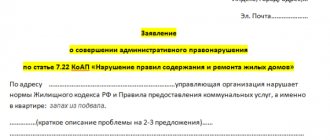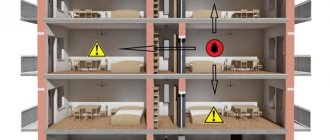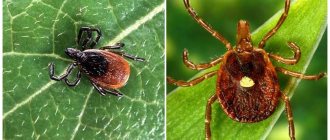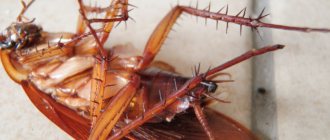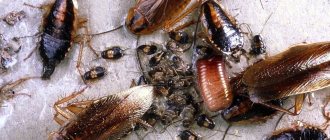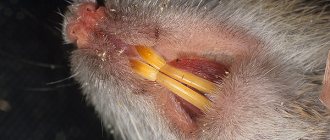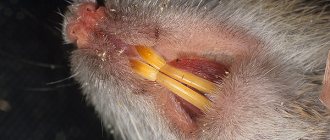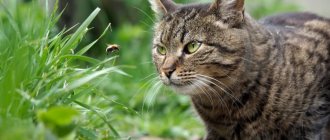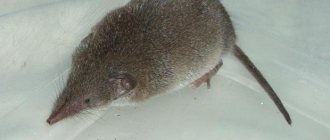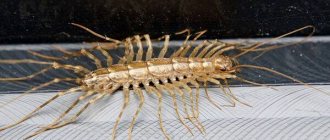What to do if you have pediculosis in kindergarten
First of all, parents must understand that lice infestation in children's groups occurs due to close contacts, and not due to lack of hygiene. Every child can become infected with parasites, but it is important to prevent mass infection.
If lice are found on a child attending kindergarten, you should immediately notify the teacher and the administration of the institution about this fact. A mandatory measure should be to identify other infected children, this is the only way to prevent further spread of parasites
In order to prevent lice in kindergarten, regular preventive examinations of children are carried out. It is carried out by a nurse. A scheduled inspection is carried out once a month. Children should also be carefully examined before entering kindergarten. The results are recorded in a special journal.
If a child is found with lice, he is sent for treatment. Until the parasites are completely eliminated, such children do not have the right to attend preschool.
Causes of lice in children
There are many opinions about the nature of lice on the human hair and body. These include chronic diseases, poor hygiene and even stress. However, the main and almost the only reason is direct infection . Lice can only be transmitted from someone, but in no case appear out of nowhere on their own; lice do not appear from stress, nerves or hepatitis.
Pediculosis can be contracted through any contact with an infected person, or through an item with which he has recently been in contact.
There is an opinion that lice, like fleas, can jump and move from person to person, jumping on heads. This is wrong. Infection can occur through contact. Cases of infection often occur in cinemas, fitting rooms or on public transport.
Kindergarten and other institutions are the most favorable places. With a large gathering of children, the risk increases significantly.
No matter how much you care for your baby, you cannot deprive him of contact with other children. Therefore, check your child’s hair regularly after playing with friends, especially if there has been contact with children from disadvantaged families. It is much easier to treat pediculosis at an early stage than in its advanced form.
It is worth remembering that lice is not a disease of a dirty head. Adult parasites feel great on clean skin.
Actions of the garden administration in case of pediculosis
After identifying children infected with lice, the kindergarten administration must take a number of measures aimed at eliminating the phenomenon and preventing its recurrence.
- 1. Notify parents and have a conversation with them about the need and methods of getting rid of parasites.
- 2. Treat the bed linen on which the child slept in kindergarten.
- 3. Isolate the child from other children.
- 4. At parent meetings, explain the importance of maintaining hygiene standards, inform about the ways of infection with lice and methods of preventing their occurrence.
- 5. If several infected children are detected, notify the sanitary-epidemiological station about this fact.
- 6. If necessary, declare quarantine
- 7. Monitor the effectiveness of ridding the child of parasites, conduct a repeat examination and make a decision on his admission to stay in a child care facility.
Parents carry out treatment of a child in case of infection at their own expense and on their own, but the kindergarten administration must advise parents on the choice of the most effective and safe means.
Duration of quarantine
If a child is found to have lice at home, parents should immediately notify the preschool about the incident and stay home. If lice were discovered by kindergarten staff, then the teacher is obliged to notify parents about this and completely isolate the child from other students in the group, while trying not to scare him or ruin his mood.
After this, the health worker conducts an unscheduled examination of all students in the group and disinfects the premises. From this moment on, quarantine is declared. There is a regulated procedure in this case:
- The teacher is obliged to inform parents about the fact of detection of lice, maintaining confidentiality (the name of the infected child is not made public).
- The management of the preschool educational institution notifies the Central State Social Security Service at the place of registration of the child. If there are several cases in the group, then the information is sent to the assigned clinic with a statement about the outbreak of lice.
- Parents are briefed.
- The institution is quarantined for a period of 30 days .
During quarantine, disinfection measures are carried out in preschool educational institutions, including daily inspection of pupils and staff for problems. A sick child can visit the institution only upon presentation of a certificate of admission from the clinic or SES.
Memo for parents
If there is lice in kindergarten, what should parents do? First of all, do not panic and remain calm. There are various ways to remove lice and nits without problems or health consequences.
Algorithm of actions for parents:
- • conduct a thorough examination of all family members to identify those infected;
- • carry out immediate and simultaneous treatment of everyone who has parasites;
- • apply the lice remover to damp hair following the instructions
- • after treatment, you need to carefully comb the child’s hair with a fine-toothed comb in order to completely get rid of nits;
- • all procedures must be performed with gloves and an apron, the comb is disinfected after treatment.
In the future, parents must follow preventive measures to prevent re-infection.
Symptoms of lice
Pediculosis is quite easy to identify. Symptoms are pronounced:
- severe itching of the skin in the hairline area;
- the appearance of characteristic spots from insect bites, often ulcers (children scratch the bite site);
- the presence of adult parasites ;
- on the hair, mainly at the roots at a distance of 1 cm from the skin, there are oval grains - nits (eggs);
- Scaly may appear (behind the ears, on the back of the head).
Symptoms appear within a day after an adult gets on a child’s hair. Nits usually appear within a couple of days. The parasite is capable of laying several dozen eggs per day. The incubation period for nits is about two weeks, depending on the temperature.
If symptoms occur, it is necessary to pick up the child from kindergarten as soon as possible, buy a product and carry out treatment, as well as disinfect personal belongings.
How does infection occur and how to protect your child?
Lice are small blood-sucking parasites that thrive on the human scalp. The most common route of illness is through close face-to-face contact with another person. It is a mistaken belief that lice jump well and can fly. Outside their natural habitat, they are deprived of a food source and quickly die.
However, lice can move quickly, which allows them to move from one host to another. The cleanliness of your hair and scalp does not matter - parasites can transfer to both dirty and washed hair with equal success.
The risk of becoming infected with lice through hairpins, hats, combs, and hair jewelry is almost zero. You cannot become infected with head lice by visiting a pool or sauna, or by swimming in open water. Contrary to existing misconceptions, lice are not carried by animals and do not arise from nerves.
Parasites die at critically low temperatures. But this does not mean that staying in the cold without a hat can eliminate parasites, since the human body still maintains the temperature necessary for their life.
The only way to remove lice is the external use of various drugs or folk remedies. After using them, you need to carefully comb the child’s hair with a special comb with thick teeth so as not to give the remaining single parasites a chance to develop.
Prevention of lice infestation in children plays an important role.
. Unfortunately, no method guarantees complete protection, but following simple rules significantly reduces the risks. Precautions are
- • follow the rules of hygiene, wash your hair at least 3-4 times a week;
- • regularly examine the child even in the absence of symptoms of infection;
- • limit contacts with people leading an unsanitary lifestyle;
- • regularly change and wash underwear and bed linen;
- • keep your premises clean;
- • avoid using other people's combs, hairpins or hats.
Preventive measures in a child care facility include regular examination of all children and isolation of those infected.
Remember! The problem of pediculosis is urgent!
One of the problems that we have to face quite often nowadays is pediculosis. Recently, in the city of Nizhnevartovsk, cases of registration of head lice have become more frequent. Basically, this disease is detected in children attending organized groups, they account for 63% of all cases, the remaining percentage is among the population “14 years and older.” This level of head lice prevalence in the population suggests that this problem is quite relevant and requires increased attention.
A big mistake is the opinion that head lice is the result of uncleanliness. One of the main factors preventing humanity from getting rid of these constant “companions” is their ability to adapt to means of struggle. Research conducted in Europe in recent years has shown that louse loves clean hair and is not afraid of water, swims and runs well, so you can become infected with lice in a swimming pool, bathhouse, or in crowded places (transport, public events), where short-term contact is possible two heads; when borrowing a hat, scarf, jacket with a hood, tape headphones; when using shared combs, head decorations, brushes, bedding, clothing, etc. Frequent reinfection, associated with the lack of collective simultaneous treatment both at school, kindergarten, and at home, also contributes to the rise in the incidence of head lice; insufficient awareness of parents about head lice and improper use of treatment.
There are three types of lice: body lice, head lice and pubic lice.
The body louse is the largest (size up to 5.0 mm), lives in the folds and seams of linen and clothing, where it lays eggs that stick to the fibers of the fabric, as well as to the hair on the human body. The average lifespan of adult lice is 35-45 days. During its life it lays up to 400 eggs. Body lice remain viable outside humans for 2-3 days, when the temperature drops to 7 days.
Head louse - (size up to 3.5 mm) lives and reproduces in the scalp, preferably on the temples, back of the head and crown. The life cycle from egg (nit) to adult is 25-35 days; it lays up to 140 eggs during its life. Outside the host's body, it dies within a day.
Pubic louse - (size up to 1.5 mm) lives on the hair of the pubis, eyebrows, eyelashes, mustache, armpits. With significant numbers, insects can spread over the entire lower part of the body, especially on the stomach; after the bites, characteristic bluish marks remain. The female lays about 50 eggs during her life. Life expectancy is about a month. Outside of humans, the pubic louse lives 10-12 hours.
The main symptoms of lice are itching accompanied by scratching. Scratching often contributes to the occurrence of secondary skin diseases: pustular lesions, dermatitis, and some people develop allergies. In advanced cases, a “tangle” may develop—tangling and gluing of purulent-serous discharge into the hair on the head.
In addition, lice carry pathogens of infectious diseases (typhus, relapsing fever, Volyn fever (trench disease)).
Treatment and prevention. A head louse can be detected by examining the scalp; nits are most often found in the temporal and occipital regions; when examining clothing and linen at seams, folds, collars, and waistbands. In addition, you should pay attention to the following complaints and signs: itching and scratching marks on the scalp. To conduct an examination for pediculosis, you must have a well-lit workplace and a magnifying glass.
If you find a patient with pediculosis, you should definitely contact a medical institution (polyclinic, skin and venereal disease clinic), where appropriate treatment will be immediately prescribed. There are two methods used to kill head lice – mechanical and chemical.
It is advisable to use the mechanical method in cases of minor damage, as well as in the presence of skin diseases, allergies, and in children under 5 years of age, when the use of anti-pediculosis drugs is not advisable. This method consists of the following activities: cutting and shaving hair, combing out insects and nits with a fine comb. To collect hair, paper or any other sheet material is placed, which is burned along with the infected hair.
The chemical method of control uses pediculocidal agents. Currently, the pharmacy chain has a large number of effective and safe drugs to combat lice. When infested with head lice, drugs are used (“Nittifor”, “Nix”, “Para-Plus”, “Pedilin”, “Medifox”, “Super-Medifox”, “Spray-Pax”, “Anti-Bit” and others). For head lice, the hair is treated with anti-pediculosis drugs according to the instructions, then the head is washed with hot water and soap and combed with a comb with cotton wool combed onto its teeth, soaked in heated table vinegar. The procedure is repeated 2-3 times.
The main measure to prevent head lice is following the rules of personal and public hygiene: regular body washing (at least 2 times a week), regular change of underwear and bed linen; washing bed linen at high temperatures, ironing clothes with a hot iron, especially seams where lice usually lay eggs; systematic cleaning of outer dresses, clothes, hats, regular cleaning of premises; It is necessary to carry out regular haircuts and daily combing of the scalp. Active identification of people with pediculosis also plays an important role in the prevention and control of pediculosis. If cases of head lice are detected in an organized community (school, preschool, etc.), then the head of this institution must organize and carry out quarantine measures. In these institutions, disinfection institutions inspect children for head lice, and treat the premises, equipment, and bedding of the quarantine group, and subsequently the children are examined by a medical worker at the child care facility once every 10 days. In households, along with the treatment of premises, if necessary, decontamination of things is carried out. A child with head lice should not attend a child care facility; he is sent for rehabilitation.
All these measures are carried out to prevent the spread of head lice.
And for preventive purposes, medical workers in children's institutions conduct routine examinations of children for lice. Students of schools and vocational secondary institutions are required to be examined after each holiday, and are selectively examined monthly in grades 4-5, and before the end of the school year. Children in kindergartens must be examined by a medical worker once a week. Newly admitted children, as well as children after a long absence (more than a week), must be examined for pediculosis.
Dear parents! Inspect the scalp of your children and family members daily if you suspect the presence of lice or nits. If head lice is detected in a child attending a children's group, it is necessary to inform the teacher (or teacher) without hiding this situation, in order for them to take urgent additional measures to prevent the further spread of the infection, incl. to identify all persons.
Signs of infection
Signs of lice The causative agents of infection are several types of lice:
- head lice;
- linen lice;
- pubic lice.
Parasites feed on human blood, are capable of spreading typhoid fever, and pose a threat to the entire society. The main symptoms of different types of pediculosis are similar to each other, only the location of the parasites differs.
- Head lice parasitize the scalp, live in the scalp, eggs cling to the hairs closer to the roots; you can see what lice and nits look like in the photo.
- Body lice live outside the human body, building nests in folds, seams of clothing, and bedding. They feed about 4 times a day, so they are often found on the human body. Linen lice bites are located on the body and face. They do not live on the head or genitals.
- Pubic lice are most often transmitted through sexual contact. Affects the pubic hair and perineum. With severe infection, parasites are found on the hair of the abdomen, chest, armpits, and eyelashes.
In what cases is processing carried out?
Pediculosis is usually detected in the emergency department at the sanitary inspection station. If it is possible to detect adult lice and nits in the hair, an additional examination of personal hygiene items and the patient’s belongings is carried out. The patient is transferred to a closed room and examined on a couch. The procedure for getting rid of lice is carried out in an inpatient department. Disinsection measures include comprehensive measures to destroy parasites in hair, body, and clothing.
Contraindications for treatment may include:
- children under 3 years of age;
- pregnancy, lactation;
- serious condition of the patient;
- a large number of purulent wounds on the skin.
When pediculosis is detected, it is necessary to fill out the appropriate papers in which the patient gives his permission to carry out the procedure. Anti-lice medications are allocated either from the medical fund or purchased at the expense of the patient. The actions of a nurse in case of head lice are limited to preparing and carrying out sanitation, filling out a log in which the data is displayed in table form, and notifying the patient’s relatives.
In cases where lice are detected in children, the health worker reports to the preschool or school institution. According to the new Sanpin on the prevention of lice, an unscheduled inspection is carried out in the class and group, and preventive measures are taken to prevent the spread of lice.
Final stage
- burn the paper over which the combing was carried out;
- remove the patient’s clothes and underwear and place them in an oilcloth bag; carry out the same manipulations with the clothes of the nurse who was involved in the treatment;
- send the bags to a disinfection chamber;
- treat the comb with alcohol;
- treat the premises with an insecticidal preparation.
At the end of the procedure, the nurse must fill out a lice examination log and make a corresponding note in the patient’s outpatient record. A re-inspection is carried out after 7 days, and additional treatment is performed if necessary.
In cases where body lice are detected, hygiene procedures are prescribed, and all the patient’s belongings are subject to heat treatment. It is recommended to sanitize the apartment. After removing the parasites, the medical worker conducts explanatory conversations so that the patient cannot get lice again.
How is processing carried out?
Sanitation is carried out in a separate room. It should be well ventilated. The nurse's tactics when performing disinfestation are determined by the degree of infection of the patient, and therefore a treatment regimen for the patient is prescribed. Preparatory work involves performing a number of activities:
- cover the couch with oilcloth material and seat or lay the patient on it, having first put a pearl on him and a tourniquet around the hairline;
- explain to the patient the process of the upcoming manipulation;
- The medical worker conducting the procedure must put on an additional gown, gloves, a mask and prepare all the necessary equipment: anti-pediculosis agent, hair scissors, a basin in 2 copies, bags for disposal and subsequent disinfection, a comb, vinegar.
Anti-pediculosis treatment Treatment algorithm for pediculosis:
- Prepare a solution to kill parasites in accordance with the instructions.
- Consistently treat hair against lice, avoiding contact of the product with mucous membranes and face. Each strand should be processed separately.
- If your hair is long, put it in a bun and cover it with a plastic scarf.
- Maintain exposure according to the drug manufacturer's recommendations.
- After the specified time has passed, rinse off the product with warm water, after removing any remaining product, wash your hair with detergent shampoo and rinse with a vinegar solution.
- After applying the vinegar solution, tie your hair with a plastic scarf and leave it in this state for 15-20 minutes.
- Rinse your hair again with warm water and dry with a towel.
- Place the patient on a chair and place paper on the floor to make it easier to dispose of insects later. Be sure to comb out dead insects and nits using a fine-tooth comb.
- Periodically remove adhering parasites from the comb using a cotton swab soaked in alcohol.
- At the end of the procedure, re-examine the patient and make sure there are no lice and nits.
- If necessary, re-treatment of hair for pediculosis is prescribed.
How to protect yourself and your children
There are several rules that should be taken into account in order to avoid scabies in your family.
- Use only personal linen, as well as personal clothing, towels, and shoes.
- Take a shower every day using natural care products.
- Change bed linen once a week, and underwear every day.
- Use hot water to wash all personal items.
- After washing, subject all items to heat treatment by thoroughly ironing.
- Trim your nails regularly, because a large number of bacteria accumulate under them, leading to skin pathologies.
- Do not use other people's things, especially toys, gloves, washcloths, towels.
- After each visit to the restroom, walk, and interaction with animals, be sure to wash your hands with soap.
- Regularly carry out wet cleaning in the house.
- Be careful about all hygiene rules when in baths, swimming pools, saunas, and beauty salons.
Remedies for head lice
The main substances for killing insects are ovicides (emulsions, shampoos, lotions) for one-time treatment and neocides (shampoos, soaps, etc.) for two-time treatment.
To combat parasites, products such as vinegar, pyrethrum powder, tar soap, and various lotions, such as Nittifor, are used.
The list of preparations intended for disinfestation of things includes soap-kerosene emulsion, concentrates of karbofos, sulfidos, sodium carbonate and others.
